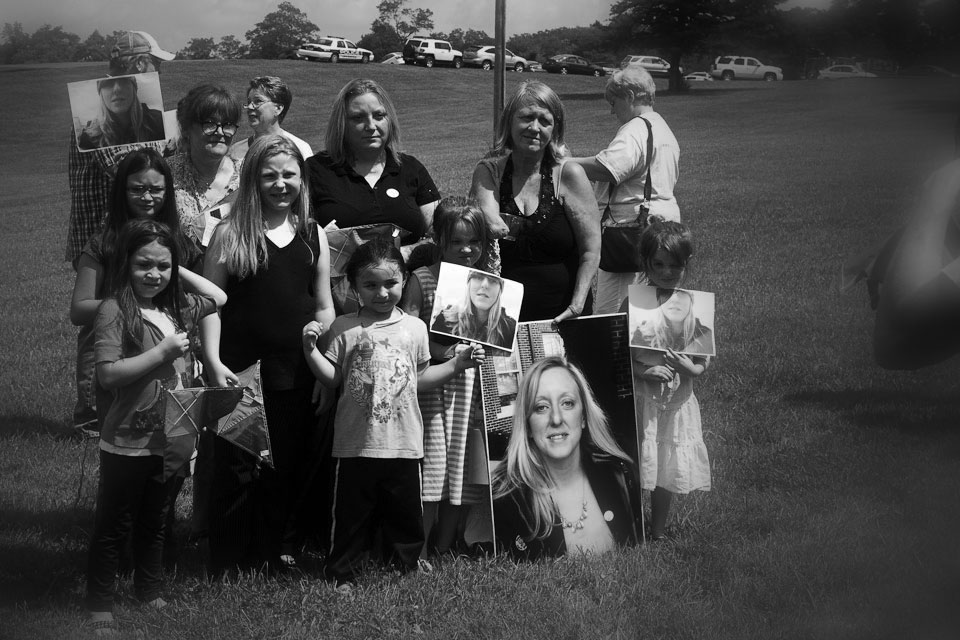From 2002 to 2006 there was not one reported loss of a single person in Lexington to heroin. Not one. Even as recently as 2010 there was only one death – albeit one death too many – reported from heroin overdose. To go from that to 22 in 2012, and 44 in 2013, is nothing short of an epidemic. So how did we get here?
For me, this became more than just a societal issue, as one-by-one, several of the kids I grew up with were dying from abuse of this drug. After some tireless digging through the wreckage of this epidemic I began to piece together the clues.
This is an account of what I found.
The Farm
“You had nearly every junkie arrested in the United States avoid prison time by coming to the farm here in Lexington.” Bob Morgan, a well-respected activist in the community ubiquitously known for his street outreach among intravenous drug users, was telling me about the Federal Narcotic Farm that opened in Lexington in 1935. He said this was an important turning point in local attitudes about illicit drugs.
“At any given time, you had 400 drug addicts being housed here,” he noted. “Many of them got weekend passes and spent their time in the pool halls and night life, contributing greatly to the culture here and creating this real, laid-back easy feeling towards heroin use.”
It was on this 1,050 acre property west of Lexington, on Leestown Road, where people with drug abuse problems were sent to rehabilitate in the tranquility of nature.
“This truly laid the foundation for what we are seeing today,” Morgan said.
Chasing demons
A leap forward in Bob’s history lesson brought us to the more recent impact of prescription pill abuse.
“Then pills started being sold, and they were everywhere. Most people would go to Florida to get a carload of pills, come back, and make a ton of money. Now you got everyone addicted to oxycontin and other pills, and that is when they started shutting down all those facilities,” he said.
On April 24, 2012, a seismic shift occurred in Kentucky. On that Tuesday, Governor Steve Beshear signed into law Kentucky House Bill 1, known colloquially as the “Pill Mill Bill.” This landmark law set strict restrictions on pain management clinics, doctors prescribing controlled substances, and patients asking for certain prescriptions. With this bill also came the mandatory requirement for doctors to complete a patients’ medical history, conduct a physical exam, check photo identifications, and run names through the state’s KASPER (Kentucky All Schedule Prescription Electronic Reporting) database, which tracks controlled substance prescriptions dispensed within Kentucky. Schedule II, III, and IV drugs are of the most concern and range from drugs with high abuse potential to relatively low abuse potential.
Michele McCarthy, the Director of Community and Administrative Services for the Center for Behavioral Health Kentucky, a substance use disorders treatment program, further explained the requirements of the bill.
“Additional points of clarification are that all Kentucky licensed physicians must be registered to use KASPER and they must query the system before prescribing certain controlled substances–schedules II, III, and IV–and there are additional requirements if it is any schedule II or a schedule III containing hydrocodone. The physician or their delegate is who has to run the report. The only way a patient has access to the information is if their physician shows them the report; the general public cannot legally access the system.”
McCarthy defends House Bill 1 as an immensely important tool to curb prescription pill abuse. But she acknowledges that the heroin epidemic was an unintended consequence. “This should not take away from all of the positive impact House Bill 1 has had, it should simply reinforce the fact that addiction is powerful and it is a deadly disease. This should emphasize the fact that more treatment is needed and that we need to take action and do something about the lives we are losing to this disease.”
Van Ingram, the Executive Director for the Kentucky Office of Drug Control Policy has his own take on the shift away from pills.
“Before, people were abusing pills such as OxyContin and Opana (both are opioid pain medications which can be addictive) which are time-release medications designed to work over a 12-hour period. To expedite and maximize the high, people were crushing them to either inject or snort them and getting 12-hours worth of a high, instantly. However, in response pharmaceutical companies made a tamper-resistant formula which was highly successful in preventing this,” he explained.
Again, those unintended consequences. “People who were problem users picked up on it real quick because they didn’t want to get caught. But meanwhile, they still have an addiction and don’t have a choice, they have to find something that will satisfy that addiction and heroin is a good substitute because of that opiate connection,” pointed out Sharon Tankersley, who served until very recently as the Drug Free Communities Project Coordinator at the Mayor’s Alliance/ Fayette County Agency for Substance Abuse Policy.
And the dark clouds rolled in.
“Also, [heroin] is cheap, it’s very cheap. You can get it way, way cheaper than most drugs.” Plus, Tankersley added, “the dealers are ready. They are cutting it down with anything and everything to make it spread farther and make more money off of a small supply.”
And like a match thrown into a box of dynamite, an explosion of heroin abuse, addiction, and overdose erupted.
“Suddenly it was blowing up around us faster than we could fix it,” recalled Will T. Scott, Associate Justice of the Kentucky Supreme Court. “The heroin problem in Kentucky is as bad as it was in the 1920’s. The court level and the justice level are absolutely overwhelmed with the numbers of cases.”
Justice Scott later compared the successful crackdown on pill abuse and subsequent shift to heroin to filling one hole in a dam only for another to open and gush water.
Who are the users?
I wasn’t satisfied with statistics. Truth be told, as a society we often are overwhelmed by numbers. I wanted to know exactly who this was affecting and hear personal testimonies about it so I could put names and faces to this crisis.
“It’s everywhere, scattered throughout Lexington,” pointed out Brannon Dunn, a tireless activist who is constantly working to help better the community around him.
“But, it is different than the usual issue of drugs. This is a serious problem affecting individuals not from the inner city. When you look on the news, all you see is talk about urban inner city violence and drugs, and the face of that in Lexington is a black face. Yet, if you check the open records you might only find one or two black people who have died from heroin overdose. Now you can’t target blacks for these issues,” continued Dunn, who is African-American.
After some more digging, I found that he was right. In fact, only 5 percent of the heroin overdose deaths in Lexington have been African-Americans while 93 percent have been Caucasian and 2 percent Hispanic
“This is now just becoming a news story because it is happening to ‘every-day-white-families’ and church-going families, church-going kids enrolled in universities and people whose families are ‘upstanding members of the community.” It’s been happening in the disenfranchised community and it was never a story before and statistics were never kept before because the people affected were considered expendable,” added a frustrated Bob Morgan, who is white.
So, that left me with many questions. Who were these people falling victim to this recent surge? How would they describe their backgrounds? How did it affect them? I needed to find out and fortunately I had the tremendous opportunity to interview several courageous individuals who told me their stories.
Alex Elswick, 23
“I’m absolutely just a prototypical All-American kid. I had a good childhood, great parents, privileged home, everything that I needed and a lot of what I wanted. I got disciplined but I had loving parents.”
Alex set the stage with this idyllic upbringing, followed by a heart-wrenching tale of his fall. After attending The Lexington School for the first part of his youth, he began experimenting with marijuana and alcohol at fifteen.
Although marijuana experimentation is not that unusual for a teenager, Alex’s use started the snowball effect that turned into an avalanche. While away at college, legal ramifications from his marijuana habit eventually turned into a pill addiction.
“He was forced to spend a lot of time at home because of his court appointed curfew so we thought it would be a perfect opportunity for him to get his wisdom teeth out,” said Shelley Elswick, Alex’s mother.
What started as a treatment for the pain from getting his wisdom teeth removed turned into an addiction and eventually Alex confessed to his mom that he was using Percocet pills and couldn’t stop.
What ensued was a hurricane of problems including getting kicked off the baseball team at Centre College and eventually thrown out of school, multiple admissions into treatment facilities in Lexington, Nashville, and Dayton, suicidal thoughts, stealing from his family, and the treacherous transition to heroin.
“We had no idea what to do. Here we were, with all the financial resources possible and no matter what we tried, it didn’t work,” recalled Shelley. “We admitted him into all kinds of treatment facilities and even hired a private drug counselor,” added Shelley with a sigh of frustration.
To put it into even more perspective, Shelley described the first time Alex got in trouble in 5th grade, when an employee of The Lexington School, a prestigious, private elementary school, called her to explain Alex’s egregious act of saying the word “butthole.”
“Just so you understand what kind of environment Alex was brought up in,” interjected Shelley.
What began as a life filled with such promise culminated in Alex, homeless, living under a bridge in Cincinnati, covered in bed bug bites.
Alex then went on to describe the reality of theft that is common with heroin addiction as well as why he believes addiction isn’t a moral defect but rather a disease.
John S., 31
“It is such a powerful drug, you have no control when you’re hooked on it.”
John S., who prefers that I use only his last initial, graciously met with me to tell his story about his own battle with heroin.
“I got strung out on oxycontin and then graduated on to heroin,” explained John.
He described the turbulence of his journey with accounts of frequent travels to Cincinnati to feed his addiction and numerous run-ins with the law, ultimately resulting in jail time and a felony.
As we talked, he imparted more details of his difficulties and seeing anywhere from 15-20 people he knew overdose and die from heroin.
“It screws up your thinking. When you’re on it, you don’t realize how dangerous the things you are doing are, you just want to satisfy that craving.”
Brandon Dunn, 31
“He would’ve been 32 on August 28th,” said Katie Dunn, the sister of the late Brandon Dunn.
When she heard what I was doing, Katie contacted me about sharing the story of her brother who passed away on May 4, 2014. She said she was eager to tell his story in hopes that it could help other families experiencing similar issues.
I sat down with Katie and her brother’s best friend, Nick Brittain for a powerful interview.
“We had a good life and loving parents. I don’t know how this could have happened.” Katie went on to explain her brother’s tragic trajectory. He began smoking marijuana at any early age and when he was 21, he was using pills which eventually led to a free-fall of heroin addiction.
Nick, a former heroin addict himself, shared his own usage story which often occurred side-by-side with his best friend.
While many people who die from heroin abuse die from the overdose itself, Katie explained another alternative that happened to her brother.
“Officially it was called a heart attack. But what literally happened was harmful bacteria in his blood from needles ate through his heart and he died.”
The Hope Center
As my quest for answers to my questions about Lexington’s current wave of heroin addiction continued, Nick thoughtfully connected me to The Hope Center, a vital asset in our community that has been working constantly to provide life-sustaining and life-rebuilding services to those struggling with addiction. They were kind enough to let me sit in one of their community meetings, which is another one of their treatment components for men in their addictions recovery program.
The next thing I knew, I was sitting in a circle with 78 other men. I looked around and my heart ached at the sight of how widespread addiction had become. Men from all walks of life and backgrounds hitting rock-bottom, each sigh a wave of the proverbial white flag. While their backgrounds were largely different, they all wore the same calloused countenances and weary eyes from years of addiction.
“It is really bad,” proclaimed Jake, who chose not to give his last name. Jake told his own story of how he went through the program at The Hope Center himself and now works there, helping others overcome similar struggles.
I asked him what his “rock-bottom” moment was.
“Death.”
“Oh, wow, you mean the thought or experience of close ones you know dying from heroin overdose?”
“No. Death, as in me dying. I got so bad on heroin that when I overdosed, I actually died for a few moments until the doctors were able to revive me.”
What is being done about it?
Despite the bleak, tragic reality of this devastating epidemic, there are many people who are determined to find a way out of the darkness.
“The response has been incredible,” beamed Tankersley.
In reflecting on the formation of The Heroin Task Force, Tankersley spoke about the community’s emphatic response.
“It was really refreshing to realize you were part of something where everybody’s focus is intense and on the same thing and we were in that room because we wanted to stop people from dying.”

Tankersley and her team work feverishly to educate the public about this issue. After meeting with a few of them, I had the honor of pitching in to help with one of their many public awareness projects. In honor of International Overdose Awareness Day on August 31, we put together an event called “Kites4Hope,” where over 100 people gathered to honor those we have lost to drug overdose, plant a memorial tree in their honor, and fly kites as a symbol of flying above the addiction.
Kentucky Supreme Court Justice Will T. Scott has seen the effect local drug courts have had – and can have, if made ubiquitous.
“Local drug courts have had a tremendous impact on this problem.” Later in our conversation he added, “There should be a local drug court set up in every community.”
From a statewide perspective, Van Ingram discussed some recent legislation he has been advocating for that could do wonders for this issue.
“Senate Bill 5, which is often referred to as the Heroin Bill, had a lot of components aimed at taking the necessary steps to combat this issue,” remarked Ingram.
The proposed bill would increase the amount of funding available for addiction treatment, hold drug dealers accountable for overdose deaths, and implement a needle exchange program that would allow users to trade in used needles for clean ones to prevent the spread of infectious diseases such as HIV.
“Also included in this bill was a component called the Good Samaritan Law which meant that if you were using heroin with other people, someone overdoses and you stay with him or her until the paramedics arrive, you will be granted immunity from prosecution.”
Ingram explained how when people are using heroin together and one person overdoses, the others will run out of fear of prosecution, thus dramatically increasing the chance of the overdose leading to a death.
SB 5 did not survive in this year’s General Assembly session, but Ingram hopes it will make a comeback in the near future.
The admirable efforts of these individuals led me to others also waging efforts against this plague. Kentucky’s Chief Justice John D. Minton Jr. has advocated for a sensitive approach to reduce this issue. “Handling a heroin addict in drug court is different from handling a person addicted to other substances,” Minton said in an interview with the Lexington Herald-Leader. “Relapses can become fatal. And we know that through our experience. We are seeing the results of that.”
Here in Lexington, at the University of Kentucky, a significant advancement in the treatment of overdoses is in its final stage of clinical trials. Daniel Wermeling, a professor in the College of Pharmacy, has developed a nasal spray to administer naloxone, a drug commonly used to prevent an overdose from turning into a fatality. The development of this method of administration has the potential to significantly reduce the number of overdose fatalities.
Meanwhile, Alex Elswick is doing his part. He now travels all over the Bluegrass with his mother, sharing his experiences to help medical professionals, law enforcement officials, and families hurting from this disease.
Hope
They say it is always the darkest before the dawn. While I only discovered a fraction of the problem, I was able to get a better understanding of how this happened, who it is affecting, and what is being done about it. And despite the agony, pain, and sorrow I encountered in these interviews, I also found glimpses of hope shining in the dark. This final video conveys these moments.
Click here for the Eastern Standard show on WEKU’s coverage of this article.
Photos courtesy of Bob Tankersley of Lovebound Studio.


